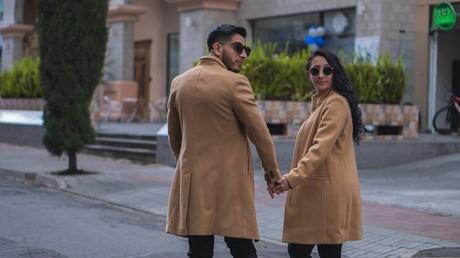Matching outfits, also known as coordinating clothes, have long been a fashion trend that extends beyond mere aesthetics. It involves deliberately selecting and pairing garments and accessories to create a harmonious and unified look. Whether worn by couples, families, friends, or groups, matching outfits carry with them cultural, social, and psychological implications that reflect unity, identity, and style.

The Evolution of Matching Outfits
Matching outfits have evolved from traditional cultural attire worn for ceremonies and celebrations to contemporary fashion statements embraced by individuals and groups worldwide. In many cultures, coordinated clothing serves as a symbol of unity, solidarity, and belonging. Families often wear matching outfits during holidays or special occasions to signify togetherness and celebrate shared bonds. Similarly, couples may coordinate their attire as a visual representation of their relationship and mutual interests.
In recent years, matching outfits have transcended cultural boundaries and become a popular trend in mainstream fashion. Fashion influencers, celebrities, and social media have played significant roles in popularizing coordinated clothing, showcasing its versatility and creativity. Coordinated outfits can range from subtle matching colors or patterns to elaborate themed costumes that make a bold fashion statement.
Psychological Impact of Coordinated Clothing
The psychology behind matching outfits delves into how clothing influences perceptions and interactions. When individuals or groups wear matching attire, it can evoke a sense of belonging and camaraderie. Matching outfits create a visual cohesion that reinforces unity and solidarity among wearers, whether they are family members, friends, or colleagues.
Moreover, coordinated clothing can enhance social interactions by fostering a sense of inclusivity and community. It can facilitate bonding and strengthen relationships by signaling shared values, interests, or affiliations. In professional settings, matching uniforms or dress codes can promote team cohesion and a sense of professionalism among employees.
Types of Matching Outfits
Matching outfits can take various forms depending on the occasion, context, and personal preferences. Some common types include:
- Family Matching Outfits: Families often coordinate their clothing for holidays, vacations, or milestone events such as weddings and family portraits. Matching outfits for families can range from identical patterns or colors to themed costumes that reflect the occasion's spirit.
- Couple Matching Outfits: Couples may choose to coordinate their attire for date nights, anniversaries, or special outings. Matching outfits for couples can be subtle, such as coordinating colors or complementary styles, or more overt with identical clothing items or accessories.
- Group Matching Outfits: Groups of friends, teammates, or colleagues may opt for matching outfits to create a sense of unity and camaraderie. Matching group attire can be themed around sports teams, social events, or group activities, enhancing group cohesion and identity.
- Themed Matching Outfits: Themed matching outfits are popular for parties, festivals, and events where participants dress according to a specific theme or costume idea. These outfits often incorporate creative elements, accessories, and props to complete the themed look.
Fashion Trends and Innovation
Fashion designers and brands have embraced the trend of matching outfits by offering coordinated clothing collections that cater to various preferences and occasions. Retailers provide options ranging from casual everyday wear to formal attire, allowing individuals and groups to express their style while maintaining a cohesive look.
Furthermore, technological advancements and customization options have expanded the possibilities for matching outfits. Online platforms and apps allow users to design personalized matching clothing items, select fabrics, colors, and patterns, and create unique outfits that reflect their individuality and creativity.
Celebrity Influence and Social Media
Celebrities and influencers have significantly contributed to the popularity of matching outfits through their social media presence and public appearances. Influencers often showcase coordinated clothing looks, inspiring their followers to embrace the trend and experiment with matching outfits in their own lives.
Social media platforms such as Instagram and TikTok serve as virtual fashion runways where individuals and brands share photos and videos of coordinated outfits, showcasing diverse styles, trends, and creative interpretations. These platforms provide a global stage for fashion enthusiasts to discover, share, and celebrate matching outfits as a form of self-expression and artistic expression.
Matching outfits represent more than just coordinated clothing-they embody unity, identity, and style in a visual and meaningful way. Whether worn by families, couples, friends, or groups, matching outfits create a sense of cohesion and camaraderie while celebrating shared bonds, interests, and experiences.
As the popularity of matching outfits continues to grow, so too does its influence on fashion trends and cultural norms. From traditional cultural attire to modern fashion statements, coordinated clothing reflects the evolution of style and the diverse ways in which individuals and groups express themselves through clothing.
Ultimately, matching outfits offer a creative canvas for personal expression, fostering connections and enhancing social interactions through shared experiences and visual unity. Whether embracing timeless traditions or embracing contemporary trends, matching outfits celebrate the art and psychology of coordinated clothing in all its forms.
Fraquoh and Franchomme
P.S. We want to hear from you! How do you coordinate your clothes? Where do you get your inspiration? How would you describe your style? Share your feedback, questions or thoughts in the comments below! For more articles on style, fashion tips and cultural insights, you can subscribe to Attire Club via e-mail or follow us on Facebook, Twitter or Instagram!

